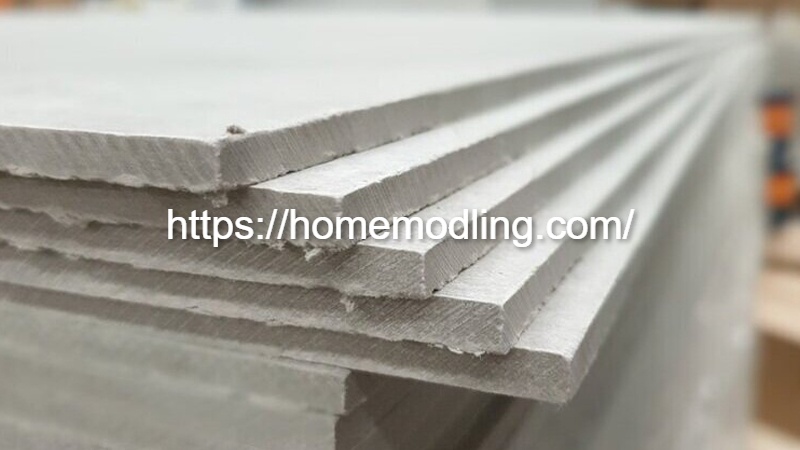Alright, so you’ve got a big project coming up. Maybe you’re redoing a bathroom or sprucing up the living room. Whatever it is, you’ve stumbled onto this question that stumps a lot of folks stepping into the world of renovations for the first time: cement board vs drywall. What the heck are these two materials, and why does it matter which one you pick? Don’t worry—I’ve got you. By the end of this, you’ll know exactly what they are, how they’re different, and where they shine, especially if you’re a beginner taking on projects like, say, a bathroom remodel.
Let’s Start with the Basics
Think about what goes into the walls and ceilings of your home. No, it’s not magic. It’s a combination of materials that make them strong, smooth, and, in some cases, able to handle things like moisture and heat. Enter cement board and drywall. These two are like the superheroes of wall materials, but they serve slightly different purposes. Here’s the rundown:
What Is Cement Board?
Cement board is, well, exactly what it sounds like. It’s made primarily from cement mixed with durable fibers like fiberglass. This material is the Hulk of wall stuff. It’s tough, it doesn’t crumble when it gets wet, and it’s often used as a base (or underlayment) for tiles. If you’re putting new tiles in your bathroom or any other spot that sees a lot of water, cement board is the go-to choice.
Here’s why people love it:
- Moisture Resistant: Water doesn’t scare it. Seriously, you can throw it in a wet shower or behind the kitchen sink, and it won’t bat an eye.
- Mold Fighter: Mold and mildew have to work a lot harder to grow on this guy.
But here’s the thing about cement board: if you’re a beginner tackling something like a beginner’s bathroom project. It’s heavy. Like, why did I not do more heavy? Cutting it can also feel like you’re trying to tackle a brick wall with scissors unless you’ve got some tools made for the job.
And What About Drywall?
Now, drywall is a whole different story. It’s made from gypsum, a soft, chalky mineral, sandwiched between two sheets of heavy paper. Drywall is the everyman’s material. It’s lightweight, simple to cut, and super versatile. You find it everywhere, from bedrooms to offices, because it doesn’t need to be fancy to get the job done.
Here’s why folks dig drywall:
- Budget-Friendly: Compared to cement board, this stuff is kind to your wallet. A beginner’s dream, right?
- Easy to Work With: Whether you’re cutting, hanging, or patching up holes, drywall makes you feel like a DIY rockstar.
That said, when water enters the picture, drywall goes all “Oh, no thank you.” It’s not built to handle wet conditions unless you upgrade to a more moisture-resistant type (like greenboard or purple board).
Key Differences Between Cement Board and Drywall
Alright, so now you know what they are. But how are they different, you ask? Here’s the cheat sheet for cement board vs drywall that you can pin to your mental corkboard:
| Feature | Cement Board | Drywall |
|---|---|---|
| Best For | Bathrooms, kitchens, and wet areas. | Living rooms, bedrooms, and dry spaces. |
| Moisture Resistance | Built like a tank against water damage. | Can crumble faster than a cookie in wet conditions (unless it’s the special water-resistant kind). |
| Weight | Heavy like a bag of bricks. | Lightweight and super manageable. |
| Durability | Stands up to impact, water, and mold like a champ. | Not as tough; prone to dents and dings. |
| Ease of Use | Harder to install. Not for the faint of muscle. | Easy peasy, even for beginners like you. |
Where Cement Board Shines
If you’re planning a project like a cement board vs drywall for a beginner’s bathroom, cement board might just be your new best friend. Why? Bathrooms are a battlefield for walls. You’ve got steam from the shower, water splashing from the sink, and maybe even the occasional “oops, I dropped the shampoo bottle” moment. Cement board handles all of this like a pro.
- Tiling Projects? Bring It On: Cement board provides a strong base for tiles. Forget about worrying whether your tiles will stick or if water will sneak behind them to cause mischief.
- Perfect for Humid Zones: Have you ever noticed how damp bathrooms get (hello, misty mirrors)? Cement board is the solution to all that moisture drama.
Where Drywall Steals the Show
Now, if your project is something like sprucing up the bedroom or giving the living room walls a modern makeover, drywall is your obvious pick. It doesn’t need to handle water, so why spend more money or effort on cement board? Plus:
- Simplicity for Beginners: Honestly, if you can swing a screwdriver, you can probably install drywall. It’s as beginner-friendly as it gets.
- Affordable and Readily Available: Drywall is like that favorite T-shirt you grab without a second thought. You’ll find it in every hardware store, and it won’t bust your budget.
Bathrooms 101: Cement Board vs Drywall for Beginners
Here’s the million-dollar question for you, bathroom remodelers out there. Should you go for cement board vs drywall for a beginner’s bathroom? The answer depends on where in the bathroom you’re working.
- Behind Tiles in the Shower? Cement board wins, hands down. It’s like the bodyguard that makes sure no water or mold sneaks through.
- Ceiling or Upper Walls? Drywall (especially water-resistant types) is lighter and easier to install overhead. Plus, it’s usually covered with paint, so it’s not at war with water 24/7.
- Lower Budget? Drywall will get the job done as long as it’s not in constant contact with water.
But here’s the thing. If you’re a beginner, you also want to think ahead. Imagine cutting corners now (using drywall in a shower area) only to redo the whole thing in a couple of years when water does what water does best. Not a happy thought, right?
Fun Facts You Should Know
- Cement board isn’t just for walls. People use it for outdoor projects, kitchen backsplashes, and even fireplace surrounds.
- There are multiple types of drywall, like fire-resistant boards (perfect for safety) and moisture-resistant ones for damp areas.
- If you’re nervous about installing either material yourself, don’t be! Tons of video tutorials and guides can walk you through the basics. And who knows? You might even enjoy the process.
Wrapping It Up
At the end of the day, choosing between cement board vs drywall comes down to the needs of your project. If it’s a high-moisture, high-durability spot like a bathroom’s shower wall, go with cement board. If it’s a quiet, dry bedroom, drywall is your new best friend. Both materials are amazing in their own ways, and the best part? You now totally get how they work and where they shine.
Remember, if you’re a beginner, start small and build confidence as you go. After all, you’ve got the knowledge now to make smart choices, whether it’s for your beginner’s bathroom, your living room renovation, or whatever project you dream up next! And hey, DIYing isn’t just about walls. It’s about making spaces feel like home.

